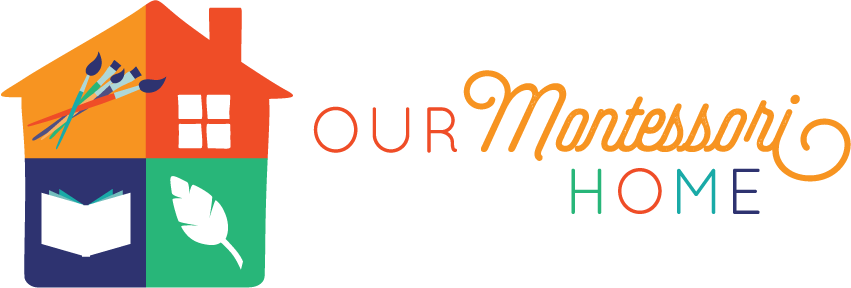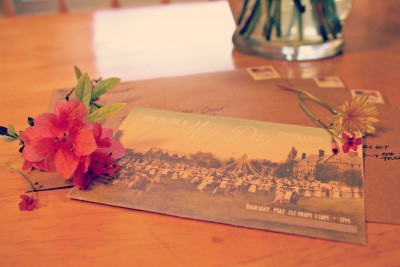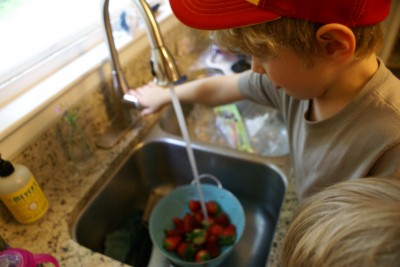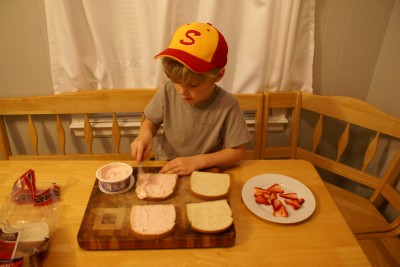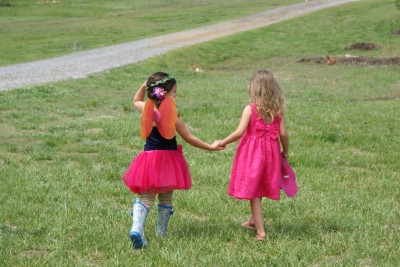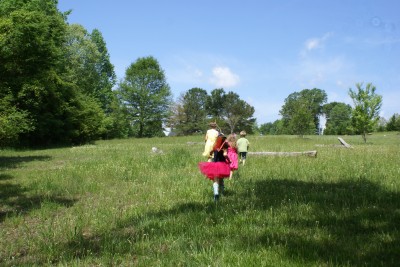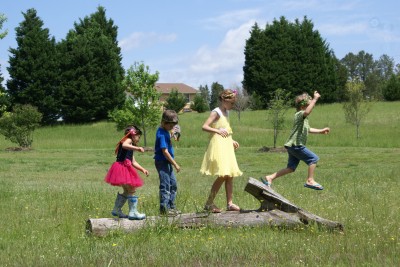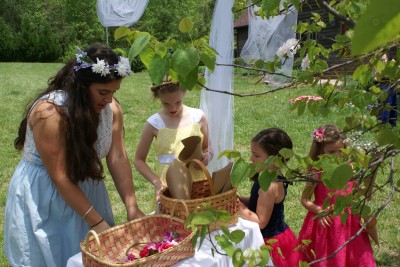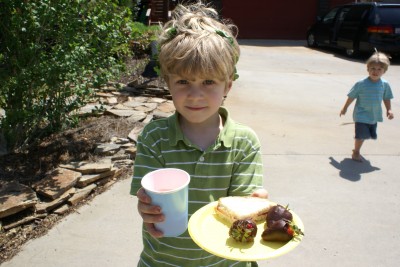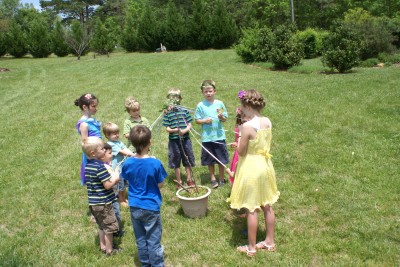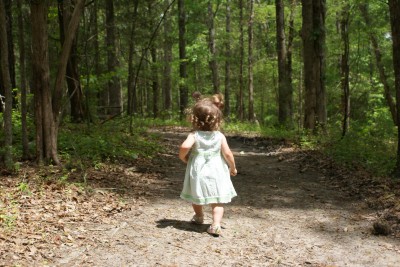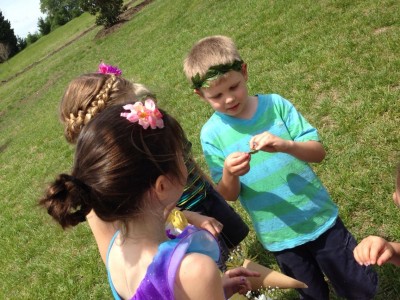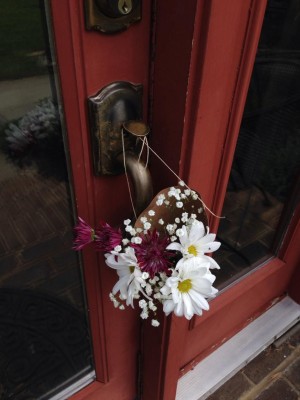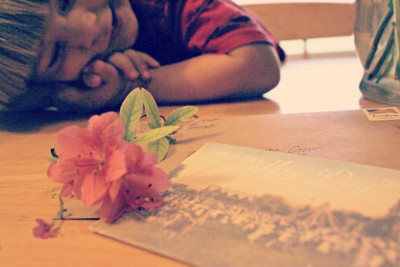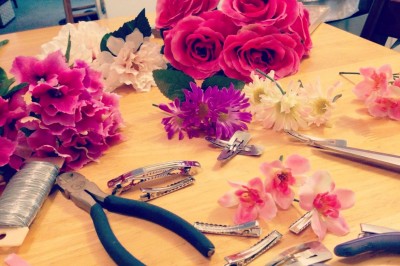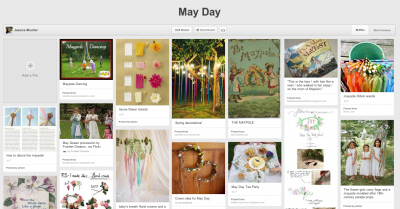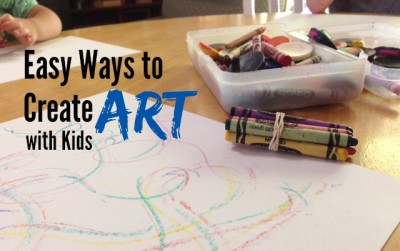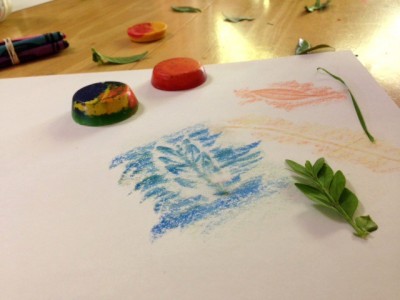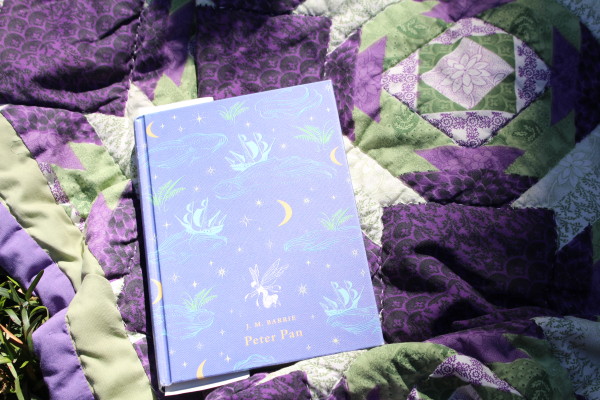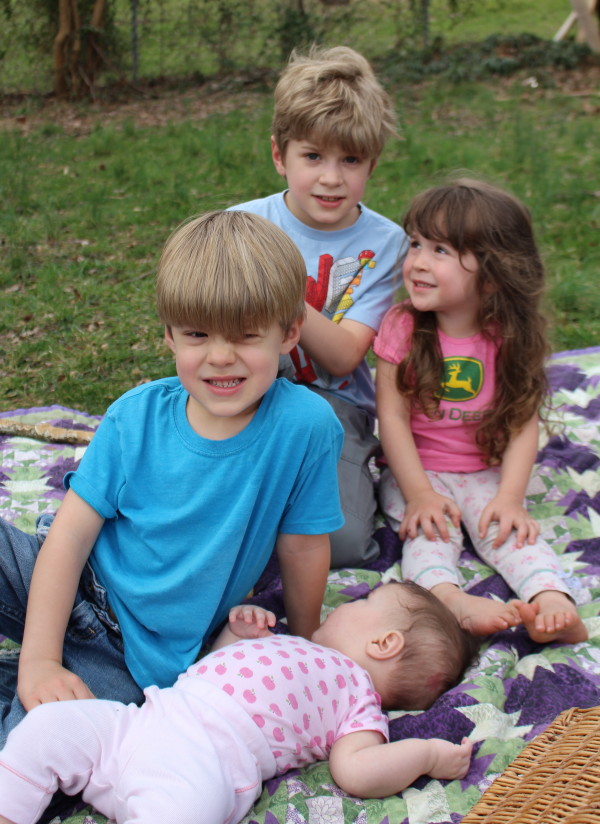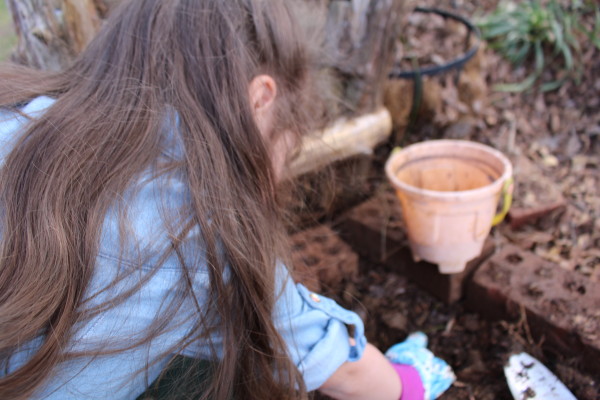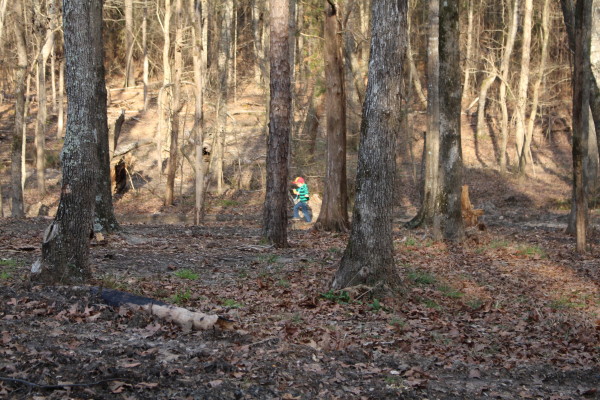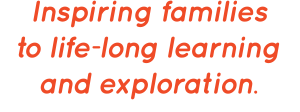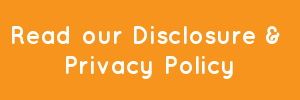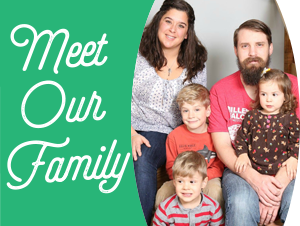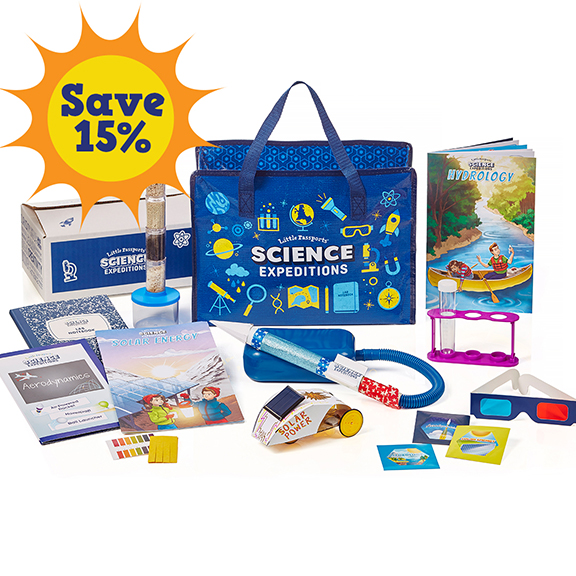This post contains affiliate links which means if you make a purchase through the link it supports Our Montessori Home.
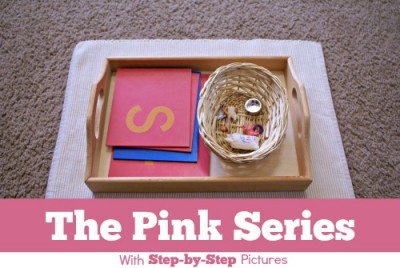
When Joey first started showing readiness for the pink series is seemed a maze to sift through. I’d read different approaches to the series that also varied from the way it was done in the school I worked at. After scouring the internet with a mix of trial and error and too many broken links, I managed to make my way through the pink series sequence. Now that Joey has moved onto the blue series (yay!) and Otto is beginning the pink series, I feel comfortable in our approach.
But to make it easy for you who are on the hunt for a Montessori approach to reading, here’s the pink series in pictures. If you’re looking for resources for the pink series, you’ll find them at the bottom of this post.
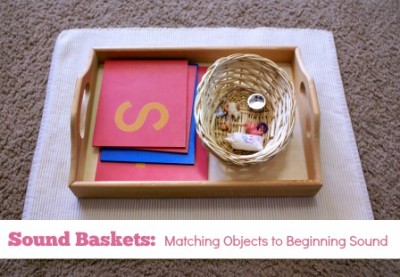
Using the 3-period lesson, we begin by matching objects to the sandpaper letter with its corresponding beginning sound. I divided our letters into six different baskets: c m a t, s r i p, b f o g, h j u l, d w e n, and k q v x y z.
1st Period (Naming): This is b (buh).
The lesson begins with telling the child, “This is…” while saying the phonetic sound and tracing the sandpaper letter. Then ask the child, “Can you say…” and have them trace the sandpaper letter.
(It’s important to note to teach the sounds first, then the names. Why? The letter is only a symbol without the sound. If a child names the letter you can respond with “b says buh” or simply repeat the first period of the lesson, “This is buh.”)
2nd Period (Recognition): Can you show me b (buh)?
The next step in the lesson is to ask the child, “Can you show me…?” If the child points to the correct sound, proceed to the next period. If the child gets it wrong, instead of saying “No” you might repeat the question, Can you show me…? If the child still says the sound incorrectly begin with the first lesson again, “This is…” clearly stating the sound and tracing the letter.
3rd Period (Recall):
The final step in the lesson is recall. Point to a sound and ask the child, “What is this?” The child should answer with the correct sound. If you’re pointing to c and they say a then point to a and say “This is aa. [Then pointing to ‘c’] What is this?”
If the child responds correctly, continue with the other sounds. If not, then you may need to come back to the lesson at another time. While the baskets are grouped with 4 to 6 sounds, it’s not necessary to present all the sounds in a basket in one lesson. Start with 1-2 sounds and add more as the child is more comfortable with the lesson and shows readiness.
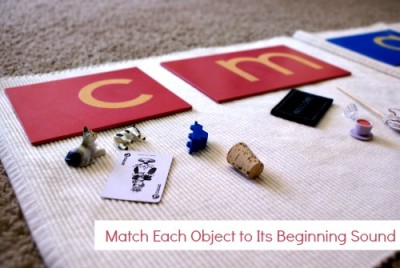
Once you’ve presented the sounds to the child (and depending on the child’s readiness and attention this may be a lesson for the next day), you can have them sort the objects. Pick up an object and name it or ask the child, What is this?, if the child gets it correct ask, Where does cat go? or What sound does cat start with?
Note: When picking objects for sound baskets, be careful not to pick objects that begin with blends which can be confusing for the child who is trying to isolate the beginning sound. Some examples are tree, trunk, drum, church.
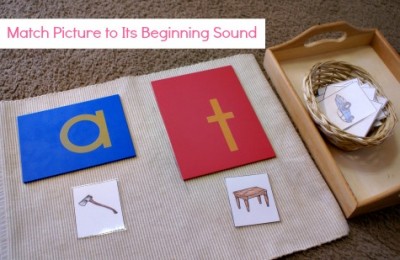
As the child becomes more familiar and confident with the beginning sound baskets, you can introduce picture cards to match with their beginning sound.
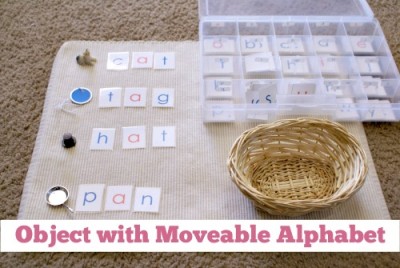
After the child has mastered the sound baskets, you can move on to building words with the moveable alphabet. Make sure the objects you choose follow the consonant-vowel-consonant (CVC) pattern and are short vowel words. Once the child has completed each vowel with objects + moveable alphabet, you can give them a basket of mixed vowel objects to build.
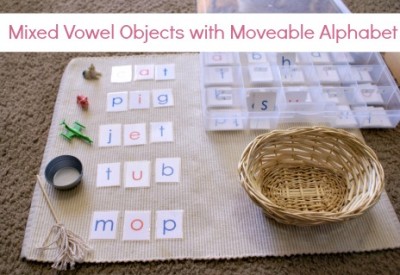
By this point, the child should not need a 3-period lesson for the remaining activities in the pink series. If they are able to pronounce the sounds clearly, they should do fine with a short instruction on how to do the activity.
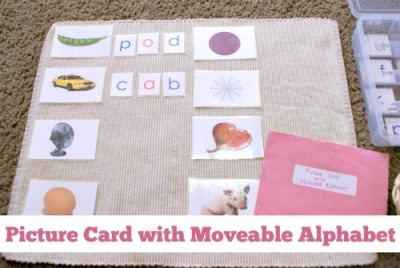
Here we’ve moved on from using objects to build words with the moveable alphabet and now the child is using a CVC picture cards to build words.
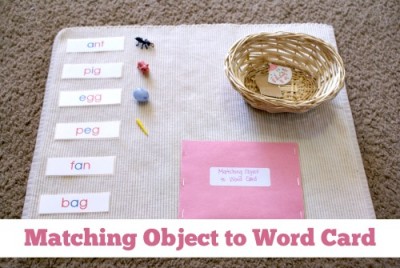
From there, we move onto matching objects to their corresponding word card.

Now that the child is more confident in blending and reading CVC words, the next step in the series is matching pictures to their word card. They are 6 different baskets for this activity, one for each vowel and then a mixed vowel basket.
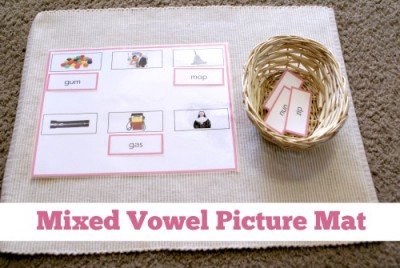
The child continues with matching word cards to their corresponding picture with the mixed vowel picture mats. There are six mats in this series.
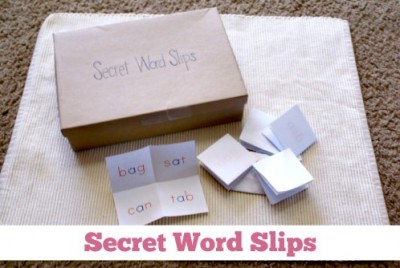
Secret Word Slips is where I feel Joey gained his confidence in reading. The box contains about 10-15 folded pieces of paper with CVC words written on them and folded in half.
The child opens the box, pulls out one slip and quietly reads the word. (If there are more than one word, the child picks one word.) After the child reads the word quietly to themselves they secretly whisper the word to the teacher. Joey thought this was the best part and I was surprised at how such a simple activity intrigued him and how quickly he was able to pronounce words he’d never seen before.
Note: In my reading, Secret Word Slips seem to be done two different ways. One, as pictured, with 4 words in the corners on one slip of paper. The other way was only one word per slip of paper and the slip folded in half.
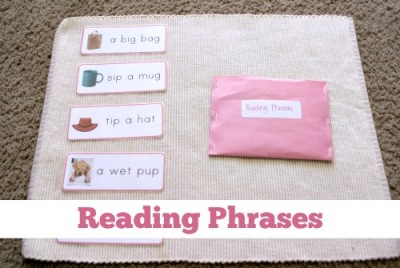
After the child has worked with the word slips for awhile, you can move on to reading phrases. This is really to get them comfortable with reading words together and readying them for their first book.
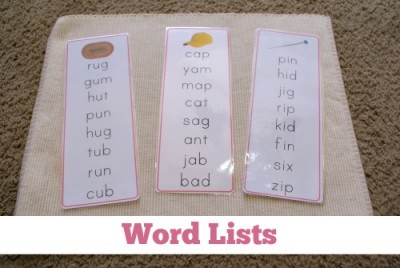
For some more practice with CVC words, the child reads word lists.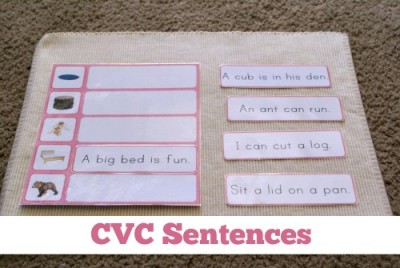
Once the child is comfortable with reading phrases, you can move onto consonant-vowel-consonant sentences. These are short sentences with CVC words and a few sight words. We explain sight words as words that don’t sound the way they’re spelled. Because, English. In this activity the child is matching the CVC sentence with it’s corresponding picture.
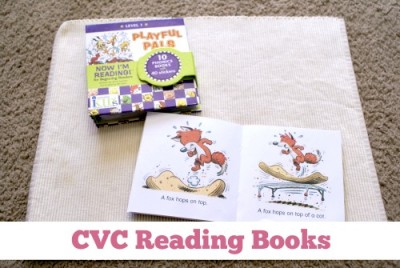
After all that practice with building, blending, and reading words, the child is ready for their first book! This is quite a milestone and fun to see them make the connections and realize that they are really reading. For our CVC books, we used Playful Pals – Level 1 by Nora Gaydos. We only used the first 5 books for the pink series, since they are made up of mostly CVC words. The remaining books work on consonant blends, diagraphs, and word endings. In a few of the short vowel books there is one word ending (-s) that threw Joey off guard, but simple enough to introduce.
by Nora Gaydos. We only used the first 5 books for the pink series, since they are made up of mostly CVC words. The remaining books work on consonant blends, diagraphs, and word endings. In a few of the short vowel books there is one word ending (-s) that threw Joey off guard, but simple enough to introduce.

Alright, so you know what to do, but now where can you find what you need for the pink series?
Pink Series Printables – The Montessori Print Shop has the pink series printables available as individual and bundle downloads for purchase. We used the Montessori Print Shop download from the picture cards to the mixed vowel mats.
Later, I found The Helpful Garden has a beautiful set of free downloads all with real pictures for the pink series, which we used for the rest of the series. (On The Helpful Garden’s site the previews on the pink series download page don’t show up, but if you click the picture icon it will still take you to the pdf.)
Moveable Alphabet – I’d really love to purchase a wooden moveable alphabet. They’re a beautiful tool in the classroom. You can find a moveable alphabet from most Montessori materials suppliers. Montessori Outlet is where we’ve bought most of our Montessori materials and is a company I trust the quality.
I made ours in a Word document. I made a table and used the font I wanted, making the vowels red, then I printed, cut, and laminated them. (So…full disclosure…I just realized I swapped the colors on the moveable alphabet. How I did not notice this until now??? Embarrassing. Okay. The important thing is to isolate the vowels.)
Moveable Alphabet Box – I bought a embroidery floss container from Hobby Lobby. It doesn’t have 26 compartments, so a few letters share a space. I labeled these so that it would be easier to find the letters that share space.
Language Objects – We invested in the Language Object Starter Set set from Montessori Services. We’ll use them throughout our language series. If there’s a word I need that’s not in the set, I can usually find it in our house.
Picture Cards for the Sound Baskets – I downloaded The Helpful Garden’s sheet for pre-reading beginning sounds, colored, cut, and laminated them.
CVC Books – Playful Pals – Level 1 by Nora Gaydos on Amazon.
by Nora Gaydos on Amazon.
Baskets & Trays – Hobby Lobby is great for these.
Mats – We use regular, old placemats. These, I believe, are originally from Target.
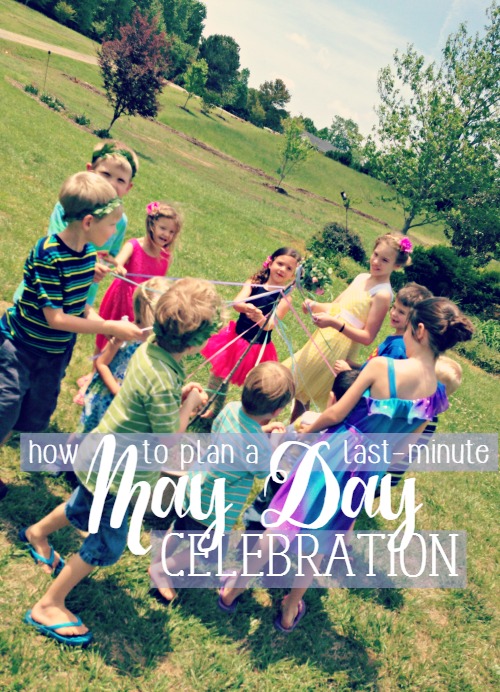 Last Thursday, we had our very first May Day celebration. I wasn’t sure how’d it turn out with the whole concept being new for everyone, but we ended up having a lot of fun and after a week of crummy weather it was sunny, warm and breezy. Perfect for a party.
Last Thursday, we had our very first May Day celebration. I wasn’t sure how’d it turn out with the whole concept being new for everyone, but we ended up having a lot of fun and after a week of crummy weather it was sunny, warm and breezy. Perfect for a party.